MINERALS
Below
are pictured some of the London Clay minerals that the collector can expect to find
commonly on the beach at Sheppey.
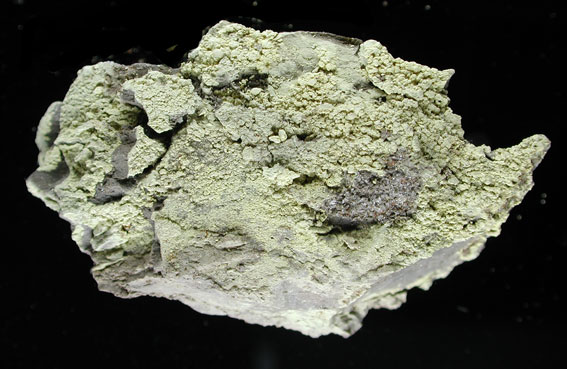
Natrojarosite (Sodium Iron Sulfate Hydroxide) occurs as a dustlike mineral throughout the London clay of Sheppey. It is yellow in colour and very transient in nature. Rain will wash it away. Often forming around carbon deposits or pyrite and only seen in the dry clay of the cliffs. This specimen was collected in 1999 by George Ryback at Warden Point, but it is very common and can be found throughout the section.
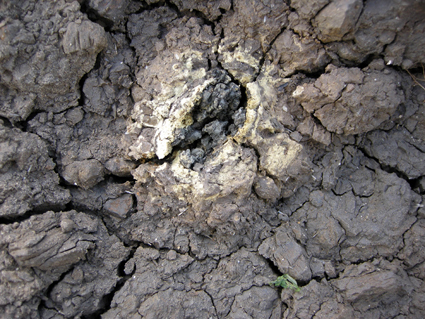 |
.
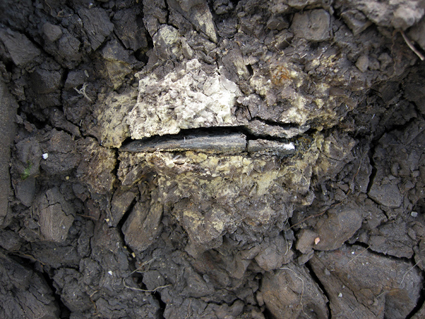 |
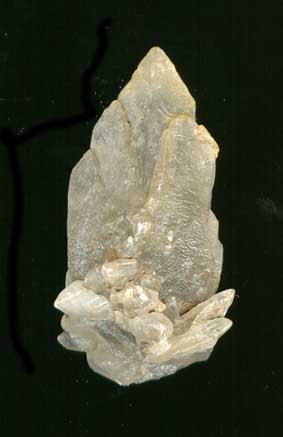
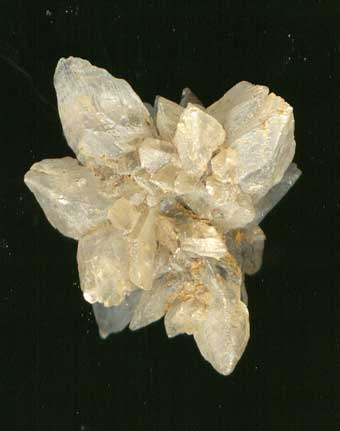
Selenite
Gypsum
(Hydrated Calcium Sulfate)crystal formed in the clay from decaying
pyrite, wash out of the weathered clay
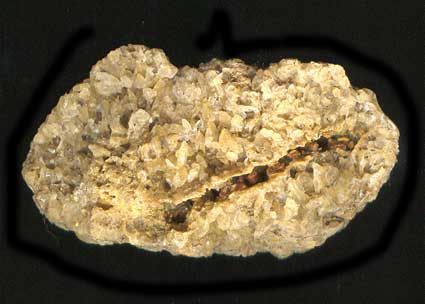
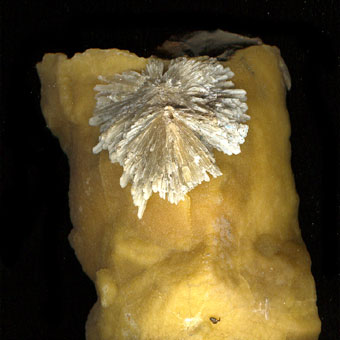
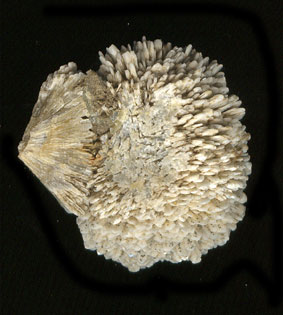
Baryte
- sulfate of barium, BaSO4 - and calcite - calcium carbonate,
CaCO3 - form inside the chambers of the septarian nodules that
wash onto the beach. The orange septaria often have the best formed specimens.
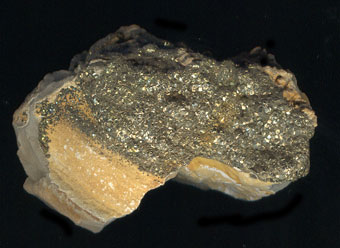
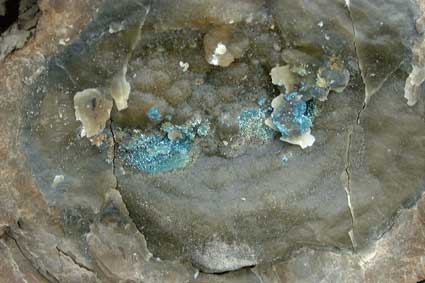
Pyrite
- bisulfide of iron, FeS2 - forms inside the septarian nodule,
and is usually associated with logs. The colouration varies and can range
from a golden colour, with oxidisations running through reds, green and
blue as in the example above. The
brown weathered marcasite
or white iron pyrites commonly found accumulating on
the beach weathers first to grey and then to a rusty brown. It is less
stable than the yellow pyrite even though it has the same chemical composition.
